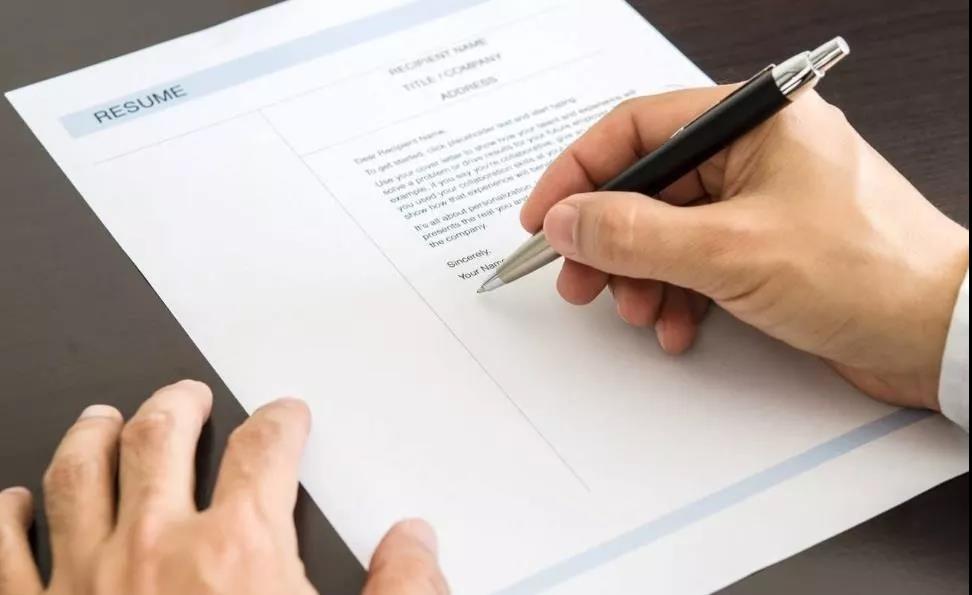小学英语小学六年级四种时态总结计划[专享]
时间:2020-09-02 16:11:22 来源:勤学考试网 本文已影响 人 
小学英语四种时态总结
1. 一般现在时。主要描述经常会发生的动作、状态或不变的真理。句末常出现 everyday/week/year/Monday , in the morning,句中常有always, usually, often, sometimes
口诀: “经常有每没(美眉 ^^)总星周 ”
经常:often
有:sometimes(记住, “有”不是have,而是 “有时”)
每:every week/month/year等
没:never 总:always, usually等
星周:on Mondays, on Tuesdays等
组成:主语 +be+名词(形容词)
I am a student. He is tall.
1. He is in New York with his cousin.他和他的堂兄在纽约。
2. These postcards are grea这t.些明信片真棒!
3. It’s a picture of the Great Wall.这是一张关于长城的明信片。
4.It’s more than twenty thousand kilometers long它. 超过两万公里长
5.It’s in the east of China它. 在中国的东部。
6.There is a Chinatown in New York. 纽约有一个唐人街。
7.There are lots of Chinese shops and restaurants the那r e里. 有许多中国商店和餐馆。
8.There are lots of beautiful lakes in China.在中国有许多偏凉漂亮的湖泊。
9.It’s a big family dinner.它是一次大的家庭晚餐。
否定句:在 be后加not
I am not a student. He is not tall.
1.
2.
3.
4.
5.
6.
7.
8.
9.
疑问句:be 动词提前到第一位。
Are you a student? Is he tall?
Yes, I am. / No, I am not.Yes, he is. / No, he isn’t.
1.
2.
3.
4.
5. 6.
7. 8.
9.
主语+动词+地点+时间
We go to school on Monday.
He goes to the park on Sunday.
否定句:主语 +don’t/doesn’t’t+动词原形+地点+时间
We don’t go to school on Monday.
He doesn’t’t go to the park on Sunday.
疑问句:在句首加 do或does
Do you go to school on Monday? Yes, we do./ No, we don’t.
Does he go to the park on Sunday?Yes, he does./ No, he does’nt’t.
动词单三变化: 1. 在原单词末尾加 s ,如:like –likes
2. 单词以o, sh, ch, s, x结尾加es,如:go–goes
3. 单词末尾为辅音 +y结尾去y加ies如:study- studies
2. 现在进行时:主要叙述正在发生的事情。句末常出现 now, 句首常出现 look, listen
组成:主语 +be +动词ing形式
I am reading English.
They are swimming.
He is playing football.
否定句:在 be后加not
I am not reading English.
They are not swimming.
He is not playing football.
疑问句:将 be放到第一位。
Are you reading English? Yes, I am./ No, I am not.
Are they swimming? Yes, they are. / No, they aren’t.
Is he playing football? Yes, he is. / No, he isn’t.
动词变ing形式:1.在动词末尾加 ing. 如:play- playing
2. 末尾有e 要去e加ing. 如:ride –riding
3. 末尾以辅音元音辅音结尾 双写末尾一个辅音如: swim-swimming
3. 一般将来时。
主要描述将来要发生的事情。句末常出现 next Monday/week/ year, tomorrow
组成:主语 +be going to +动词原形
I am going to visit Ann.
They are going to draw a dog.
She is going to ride a horse.
否定句:在 be后加not
I am not going to visit Ann.
They are not going to draw a dog.
She is going to ride a horse.
疑问句:将 be提前
Are you going to visit Ann? Yes, I am. / No, I am not.
Are they going to draw a dog? Yes, they are./ No, they aren’t.
Is she going to ride a horse? Yes, she is. / No, she isn’t.
组成:主语 +will+ 动词原形
I will go to the library.
They will clean the house.
She will eat breakfast at home.
否定句:在 will 后加not 或将will not 写为won’t
I will not go to the library.
They will not clean the house.
She will mot eat breakfast at home.
疑问句:将 will 提前
Will you go to the library? Yes, I will./ No, I won ’t.
Will they clean the house? Yes, they will. / No, they won’t.
Will she eat breakfast at home? Yes, she will. /No, she won’t.
4.一般过去时:主要描述过去发生的事情 . 句末常出现 last night/week/Monday/year, yesterday, ago
组成:主语 +动词过去式
I was a pilot.
They were busy.
He went to the market.
否定句:在 be后加not
在普通动词前加 didn’t 动词恢复原形。
I was not a pilot.
They were not busy.
He didn’t go to the market.
疑问句:提前 be 动词或在句前加 did
Were you a pilot? Yes, I was./ No, I wasn’t.
Were they busy? Yes, they were./ No, they weren’t.
Did they go to the market? Yes, they did. / No, they didn’t.
动词变过去式: 1. 在原次末尾加 ed 或d 如:play-played
like-liked
2. 辅音加y 结尾去y加ied 如:study-studied
3. 辅音元音辅音结尾双写最后一个字母加 ed如:
stop-stopped
特殊变化: can-could do-did eat-ate go-went
hit-hit pit-put sit-sat come-came
get-got have-had see-saw begin-began
give-gave win-won read-read
am/is-was are-were run-ran hear-heard
hide-hid lay-laid cut=cut wake-woke fall-fell
连系动词be是am, is, are三者的原形,一般不直接出现在句子中,而是以 am, is,
are的形式出现。它们各有分工,而且随着主语的人称和数的变化而变化。
am最专一,始终跟着 I
转;are跟you,
we及表复数名词或复数意义的词连用; is的交际最广泛, is与“他、她、它 ”形影不离,至于名词
单数,指示代词( this/that)都与is结下不解之缘。小学英语语法时态度口诀
2. 一般过去时: “昨天上个 ago前,in加年份when字连 ”(原创) 昨天:yesterday,
后面可以加 morning, afternoon,evening等 上个:last,后面可以加 week, month,year等
XX 前:ago,前面可以加 three weeks/months/years ago in加年份: in
20xx/20xx/1986/1220等,20xx前全用一般过去时,后年 20xx前就都是过去时了, 20xx,世界末
日?电影看多了。
when字连:when I was a child等
when字后面都是过去时,也要用一般过去时。
3. 一般将来时时间标志口诀:正好和一般过去时对应: “明天下个after和in后”
明天:tomorrow,后面可以加 morning, afternoon,evening 下个:next,后面可以加 week,
month,year等 XX 后:after和in,后面可以加 three weeks/months/years
这里要注意一下, after后加时间点才表示将来,如 after 3 o‘clock 。加时间段表示过去,如 after 2
hours表示过去。
in后加时间段表将来,如 in two years。
4. 现在进行时: “现在时刻看和听,最近在哪请安静。
” 现在:now, at presen,t at the
moment等 时刻:It’s ten o‘clock. I’m beating Xiaoqiang. 看和听: Look!
Listen!后面一般都用现在进行时。
最近:What are you doing recently/these day?s
在哪:Where is Xiao Z? Xiao Z is beating Xiaoqiang. 请安静: Be quiet!/Don‘t make any
noise!/Stop making noise! Xiaoqiang is sleeping.该文章转 小学英语四种时态及口诀
一提到时态,就必然用到动词。首先要明确两个概念:
动词有五种形式,即:原形(形式),第三人称单数(形式),过去式(形式),现在分词
(形式),过去分词(形式)。
小学阶段,句子有以下四种常见时态,即: 一般现在时态;一般过去时态;一般将来时态;
现在进行时态。
式, 意思就是各种不同的形式,是对应着动词来说的;
时态 ,意思就是表达各种不同的时间的事情,是对应着句子来说的。式与时,先搞懂区别。
一、 一般现在时态
一般现在时用法口诀
一般现在时, every, usually, often, sometimes.
第一、二人称和复数,动词原形不变换。
除了I, you,复数外,动词后加 s(es)别忘怀。
要变一般疑问句, be动词提前很容易。
若是没有be动词,Do和Does开头要注意。
否定句,很简单, not 在be动词后面站。
若是没有be动词,do, does加not 要牢记。
请把这些规律记,一般现在时没问题。
一般现在时态,可能是两种意思。
第一,表示经常性的动作,
常与often, sometimes, usually, every day, every
week, every month, every yea等r 表示频率的副词连用。
例如:He often goes swimming in summer.
I usually go to work by bike.
Sam visits China every year.
第二,表示现在的状态。
如:My mother is a worker.
There is a computer in our classroom.
注意问题:
be (am, is, are)动词就是独立的谓语动词,一个句子中有了 be(am, is, are)就有了谓语动词了。
句子中 不能同时出现两个谓语动词。
不少同学经常出这样的错误:
The boyis ofteneats hamburgers(. 错)
应改为: The boyoften eats hamburgers.
二、现在进行时态
正在进行时态口诀
现在分词用途多,进行时态不用说。
它的构成很好记,动词后缀 ing。
词尾若有哑音 e,去e再加没问题。
一辅重读闭音节,这个字母要双写。
还有一点要注意,改 y为ie再加ing。
现在进行时态,表示现在正在发生的动作。
结构是: am/is/are + 动词 ing(现在分词)形式。
如:I’m writing a story.
You/They/We are cleaning the classroom.
He/She/It is having some food.
三、一般将来时态
一般将来时态用法
一般将来时,将要发生事。
谓语不一般, will 后加动原。
要变疑问句, will 置主语前。
否定句,也不难, will 后把not添。
一般将来时态,表示将要发生的事情。
结构是:am/is/are going to + 动词原形;或者是 will + 动词原形。
will 通用于各种人称之后,不受人称和单 /复数变化的影响。
如:I/We/You/You/He/She/It/They will have a walk after supper.
I am/ We are/They are/ You are/ He/She/It is going to have a walk after supper.
四、一般过去时态
一般过去式之歌
过去式构成有方法,一般词尾加 ed。
如果词尾有个 e,直接加d就可以。
辅音字母 y在尾,变 y为i加ed。
“一辅重闭 ”作尾巴,双写之后 ed加。
标准过去式加 ed,少量不规则分别记。
am和is对was,are要变were没问题。
have和has用had,do和does变did。
小学英语动词过去式顺口溜
过去式 很简单,只要你能这样记。
前提必须是动词,不规则变化先记牢。
再记规则两三条,结尾有 e只加 d. live 变成 lived.
y 结尾也不难,辅音字母嫌他烦,把 y 换成 i 才愿加 ed. Carry变成 carried。
目前双写只有俩, hop 过去 hopped, stop要变 stopped。
其他动词很随和,带上 ed就能一起回过去。
动词过去式不规则词 (目前学过的 ):
am—was is—was are—were
do—did does—did have—had has—had
go—went buy—bought fall—fell
一般过去时态,也有两种意思。
第一, 表示过去发生的动作,经常与明确的表示过去的时间连用,
如:last week, yesterday, the day before yesterday,
last night, last year, last weekend 等。
如:The family had a picnic in the park last weekend.
第二, 表示过去的状态。
如:There was a small pond in the school before.
Mary was a teacher two years ago.
注意问题:
be (was, were) 是独立的谓语动词,它 不能与行为动词的过去式同时使用。
同学们经常出这样的错误:
It was rainedyesterday. (错)
应改为; It rained yesterday.
The duckswere ateour picnic. (错)
应改为:The ducksate our picnic.
过去式动词不存在第三人称单数的问题。
也就是说,一般过去时态的句子中,无论主语是什么人称,单数还是复数, 过去式动词都不能加
s/es.
可见:动词原形使用于一般现在时态的第一人称单、复数之后;第二人称但、复数之后;
第三人称复数之后;还使用于一般将来时态。
动词过去式使用于一般过去时态各种人称之后。
动词第三人称单数使用于一般现在时态的第三人称单数之后。
现在分词使用于现在进行时态中。
do/does/did这三个助动词也是经常用错的单词。
他们都是助动词,意思就是说他们是帮助行为动词的单词。
do/does 用于一般现在时态,
did 用于一般过去时态。
问句(一般疑问句 /特殊疑问句 /选择疑问句等)和否定句中使用它们。
do/does/did 总是与动词的原形连用。
句子的时态通过主动词体现出来。
如:Do you often go swimming? No, I don’t often go swimming.
Does he like apples? No, he doesn’t like apples.
Did they go to the supermarket last Sunday? No, they did’nt.
载自无忧考网:








